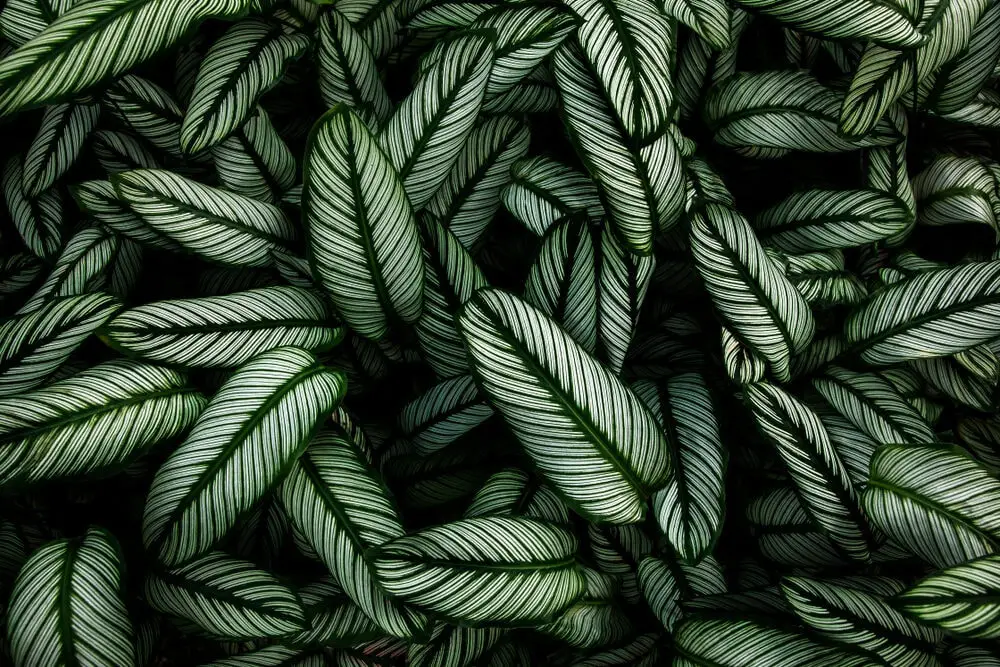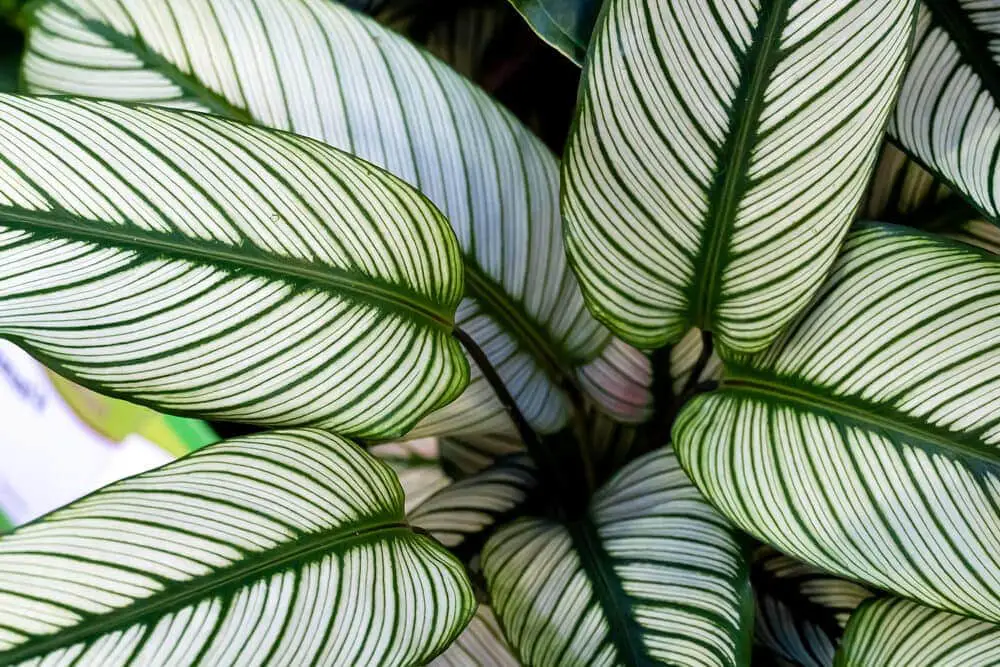The Pinstripe plant is a well-known house plant that is loved for its unique leaf design.
This plant is one of over 300 different types of Calatheas available in the world. This plant needs more care than other houseplants, so it may not be a beginner gardener plant.
Calathea Ornata Care & Growing Guide
1. Light Requirement
Since it is a tropical plant, it does well in bright but indirect light. If it doesn’t receive enough light, it leaves and stems will not grow. But if it’s outside and receives too much light, the sun’s intense rays will scorch the leaves.
One way to know if it’s not receiving enough light is if its leaves slowly begin to lose color. Bright, indirect light improves and deepens the color of its leaves.
A humid environment is best for the Pinstripe plant since it originates from Central and South American. It can be misted with a spray bottle, or you can place it by a humidifier. You can also keep this plant in a room with a shower.
2. Water
Because its leaves are large and colorful, this plant needs to be set on a watering schedule. After you water it, let the top few inches of soil dry out before you water it again. During hot seasons, water it whenever it looks dry and limp. During spring and fall, water it once or twice a week.
The Pinstripe plants are susceptible to additives in the water. You may need to purchase distilled water or buying a water filter to water this plant. Ideally, there should be no additives in the water, and the water should not be hard either.
One way to know if the quality of the water is poor is if the tips of the Pinstripe plant leaves begin to brown.
3. Climate and temperature
The Pinstripe plant is a tropical plant, so it does not do well in the cold. It should not be kept by a window that has a draft or wind. Keep this plant at between 65 and 75 degrees F. If the temperature drops below 60 degrees, its leaves may begin to fall off.

4. Soil
It doesn’t need to be fertilized often, but when it comes time to fertilize it, a standard fertilizer is okay. Do not feed it during the winter because that is when the plant’s growth is slowest.
The Pinstripe plant needs the soil to hold moisture around its roots. If you have regular potting soil, add coconut coir to the mix to improve moisture retention.
Adding charcoal to the potting soil improves the root’s access to air and promotes root growth.
5. Repotting
The Pinstripe plant should be repotted during spring or early summer because that time is it’s growing season. Water the plant the day before it’s going to be repotted. Fill a bigger pot 1/3 of the way with a mix of soil, peat moss, and coir to prep the new container.
Then take the plant out of its original pot and gently shake excess soil from its roots and its root ball. Now is the time to remove damaged or disease roots.
Then, place the pinstripe plant in its new pot and fill up the sides with soil. After, soak the plants in water, and put it near a bright window.
6. Speed of Growth
The pinstripe plant has a fast growth rate and can enter into maturity with three years. Its growth can be slowed if it is not exposed to enough light.
7. Height and Spread
If this plant is grown in a pot, it can grow to 2 ft tall, and it will grow to two feet in width.
8. Trimming
As pinstripe pants get older and mature, some of its oldest leaves turn yellow. Remove these yellow leaves first, so more nutrients and energy are dedicated to younger growth.
Always remove leaves to the base of the central stalk. An occasional dead leaf is nothing to worry about, but if it becomes more yellow, then you may have a problem.

Is the pinstripe plants plant poisonous?
No, the Pinstripe plant is not poisonous to either humans or animals. But that doesn’t mean that it is edible. If a human or an animal eats the leaves of this plant, they could experience vomiting and nausea.
Can pinstripe plants Grow in Water?
No, the Pinstripe plant does not grow well in water from ponds or lakes. It likes the soil around it to be compact and to hold water, but too much water can kill it.
However, it can be grown hydroponically. It just needs to have distilled water that doesn’t have any additives because the plant is susceptible to what’s in the water supply. It still needs to be kept in a humid area, though.
Does the pinstripe plant have flowers, and how do I get them to bloom?
Yes, pinstripe plants have small bunches of orange flowers that bloom during the spring. However, if you have indoor plants, then you most likely will not see them. They do not bloom if they’re indoors. If they’re outside in a humid area, like their tropical home of Brazil, they will be in full bloom every year
Common pinstripe plants Pests and diseases
- Spider mites are small red spiders that infest plants. They destroy plants by sucking sap and nutrients from descent cells. You can see they’re infecting a plant by spotting thin webs all over the plants. Their small red bodies also stick out against green foliage. To get rid of them, hold them down or spray them off with water and then applied and insecticides every three days until they’re gone.
- Leaf lesions are caused by a fungus that turns needs black and eventually killed the entire plant. To fight it, cut off any disease parts of the plant and then inside a fungicide every couple of days until really spot is gone.
Learn more:
Conclusion
- This plant is from Central and South America and around Brazil.
- It has flowers that bloom every year, but if it is a houseplant, then you will not see them. They don’t bloom if they’re indoors.
- The soil must retain water well.
- If it doesn’t get enough light, the tips of the leaves will turn brown.
- When you repot it, trim off any old or diseased roots.
- The pinstripe plant is not poisonous to animals or humans.
- Only use distilled water to water this plant as it is susceptible to additives and water salts.
Victoria is the owner and main author of hobby plants. She loves spending her free time in her garden planting and taking care of her plants. Victoria hopes you enjoy the content here!